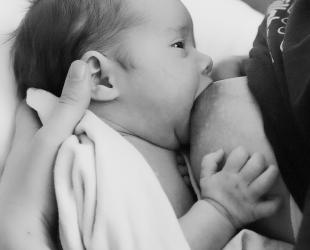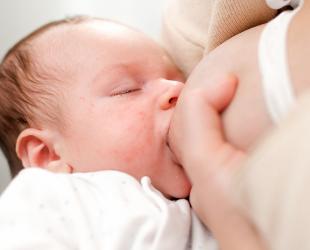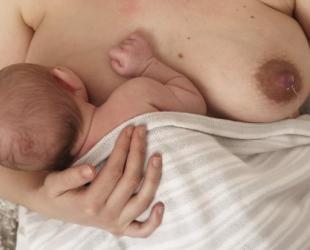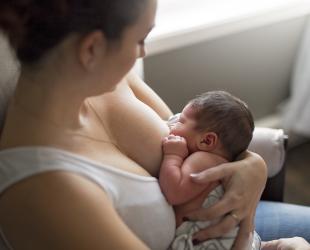Nipple shields can be a helpful step. Extra support can help you move past needing them.

A nipple shield is a thin, flexible silicone cover that fits over your nipple during breastfeeding. It has small holes to let your milk flow through to your baby. Some shields have cut-outs so your baby’s nose or chin can touch your skin.
Nipple shields are sometimes suggested when other ways to solve breastfeeding challenges haven’t worked. They’re usually used after your milk has changed from colostrum to mature milk, which happens 2 to 5 days after birth. Most mums only need a nipple shield for a short time.
Breastfeeding experts have different opinions about nipple shields and when or if they should be tried. Some of the reasons for using them include:
- Sore or damaged nipples
- Attachment issues (like flat or inverted nipples, or if your baby has a high palate or was born early)
- Helping a baby learn to feed at the breast after using a bottle
Sometimes these challenges can be managed with skin-to-skin contact, improving positioning and attachment, or supporting your let-down reflex.
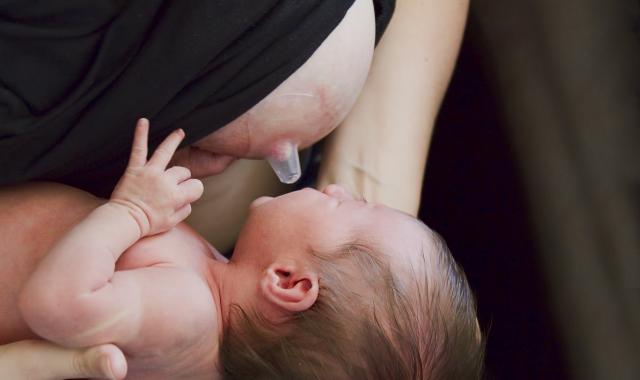
Things to consider
Older nipple shields were made from hard plastic or thick rubber. This affected how well a baby could remove milk from the breast and sometimes reduced milk supply.
Today’s thin silicone shields are less likely to cause these issues, but your baby might still take a little longer to feed than they would without it. If your baby’s attachment isn’t quite right, they might not get as much milk. It's important to check the signs that your baby is getting enough.
How to use a nipple shield
Nipple shields come in different shapes and sizes. The right fit is important. An unsuitable shield can cause more nipple damage. It’s a good idea to get help from a lactation consultant, breastfeeding counsellor, or doctor with breastfeeding expertise. They can help you choose the right shield and make sure your baby is well attached.
Some tips for using a nipple shield
- Express a few drops of breastmilk onto the inside of the shield. This will help prevent rubbing and improve the seal of the shield around your breast.
- Express a few drops also onto the tip of the shield to encourage your baby to attach.
- Stretch the brim of the shield and place it centrally over your nipple.
- Position any cut-outs where your baby’s chin and nose will touch your breast.
- Flatten the ‘brim’ of the shield over your breast and hold the shield in place with your fingers on the outside edges.
- There should be a small space between the end of your nipple and the end of the shield’s crown. If your nipple touches the end, the shield may be too small.
- Point the crown at your baby’s nose and encourage your baby to open their mouth wide. As your baby attaches, direct the shield towards the roof of your baby’s mouth.
Signs your baby is well attached:
- Your baby’s mouth is wide open with a good mouthful of your breast. Their lips are over the brim of the shield, not just the crown part and their bottom lip is turned out
- Baby’s chin is pressed into your breast
- Their tongue is forward and cupping the shield
- Your baby’s whole jaw moves as they suck and you can see them swallowing. Sometimes you may hear a soft ticking sound.
- Your nipple feels fine at the end of the feed, with no pain or rubbing.
- The crown of the nipple shield usually has milk in it at the end of the feed if your breastmilk was coming through the shield.
Cleaning your nipple shield
You don’t need to sterilise your nipple shield. After use, rinse it in cold water, then wash in hot soapy water and rinse under hot running water. Dry with paper towel and store in a clean, covered container.
Weaning off a nipple shield
Weaning can take time, and support from a breastfeeding counsellor or lactation consultant can help. Try these ideas:
- Remove the shield partway through a feed and continue without it.
- Have lots of skin-to-skin contact with your baby so they can use their instincts to find your breast.
- Offer the breast as soon as your baby wakes or shows feeding cues (and try without the shield).
- Try feeding while walking around.
- Express a few drops of milk onto your nipple before feeding.
- Be patient. If your baby gets upset, use the shield and try again later.
In the following video Dr Lisa Amir, a GP and Board Certified Lactation Consultant, talks in detail about using nipple shields.
© Australian Breastfeeding Association December 2025
